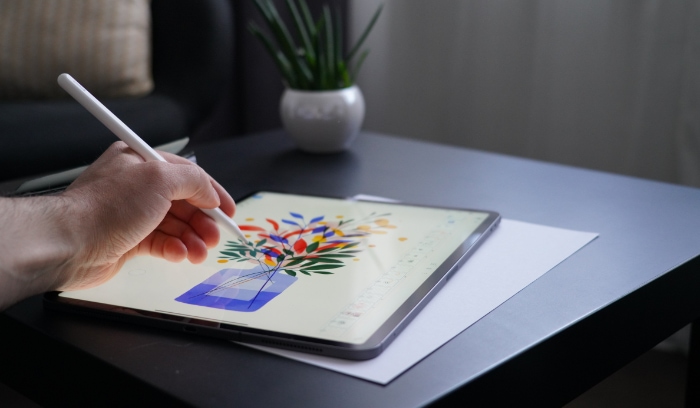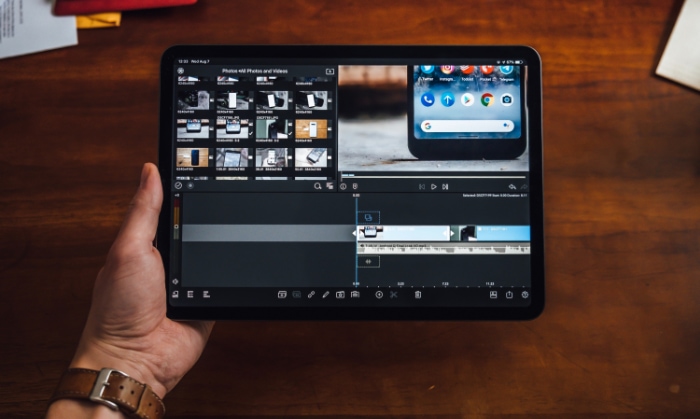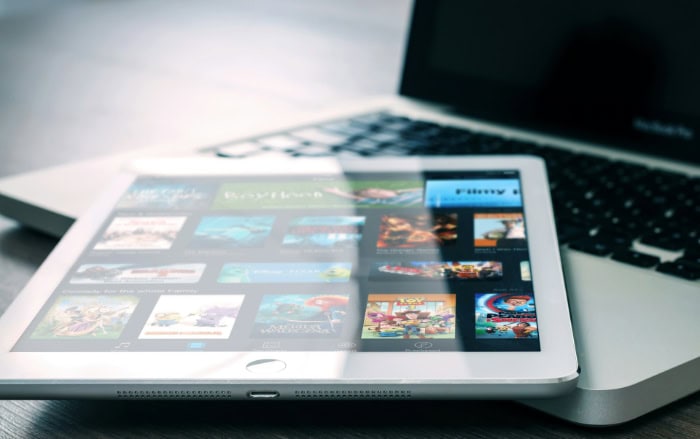iPad vs. Tablet: Breaking Down the Differences

Swiping through tablet options online or at your local store, you quickly notice two main contenders dominating the shelves: Apple’s iPad and a rich variety of Android-powered tablets. Each offers a world of features, from unique operating systems and hardware designs to distinct software experiences.
Picking the right model can feel like choosing a new companion for school, work, creativity, or relaxation. Price, performance, design, and ecosystem all play major roles in the decision.
Platform Fundamentals and Technical Differences
Choosing a tablet is rarely as simple as comparing specs side by side. Each platform offers distinct strengths that shape not only how the device feels in your hands but also how seamlessly it fits into daily routines and larger workflows.
Apple's iPad line and the wide variety of Android tablets approach nearly every aspect of design and functionality differently, making it important to look at how user experience, design ideals, and processing performance are blended in each.
Operating System Architecture
iPadOS has evolved from its iOS roots into a system purpose-built for Apple's tablet lineup. Navigation feels smooth and consistent, relying on familiar gestures that quickly become second nature.
Features like Split View and Slide Over make it straightforward to multitask or reference information side by side. The interface design emphasizes simplicity without sacrificing capability, offering everything from Drag and Drop between apps to a robust Files app that makes document management easy yet secure.
Every update is carefully optimized for Apple hardware, ensuring both performance and long-term support.
Android tablets, on the other hand, offer a broader range of interpretations due to different manufacturers adding their own custom interfaces atop Google’s core Android experience. Some brands focus on productivity features or child-friendly modes, while others introduce unique gestures, system utilities, or ways to organize apps.
Navigation is often built around three-button or gesture-based controls, with recent Android versions bringing improved tablet optimization and split-screen multitasking. Feature sets and pre-installed apps can vary widely between brands, making it possible to pick a device that feels right for your personal preferences.
The flexibility in customization and layout give Android tablets an edge for users who like to tailor their devices from the ground up.
Assessing core functionality, iPadOS is often applauded for being intuitive and consistent, whereas Android tablets offer more choices for tweaking the look and feel of the device. Both platforms aim to make navigation efficient and enjoyable, but the Apple approach centers on simplicity and coherence while Android’s strength lies in choice and adaptability.
Hardware Design Philosophy
Apple’s iPad lineup exemplifies a tightly integrated hardware and software approach. Everything, from the placement of speakers and buttons to the feel of the display and overall thickness of the device, is engineered with precision.
High-quality aluminum frames deliver a premium feel, and incremental attention is given to features like color accuracy, anti-reflective coatings, and battery life. Each iPad model is designed to work hand-in-hand with accessories like the Apple Pencil or Magic Keyboard, pushing productivity and creative potential even further.
Android tablets come in a far wider variety of shapes, sizes, and price points. Premium models, such as those from Samsung or Lenovo, can rival iPads in terms of materials and build quality, boasting high-refresh-rate OLED displays, slim bezels, and advanced stylus support.
On the other end of the spectrum, budget and mid-range Android tablets often use plastic bodies and simpler display technologies to keep costs low, catering to families, students, and casual users. Design philosophies range from ultra-portable tablets with minimalist looks to rugged devices built for fieldwork or younger children.
This range means nearly anyone can find something that matches their usage, budget, and stylistic preferences.
Display technology also varies, with Apple consistently investing in sharp, color-accurate LCD and Mini-LED screens for their devices. Leading Android tablets have started pushing boundaries with stunning AMOLED displays, while affordable options stick with conventional LCDs.
The diversity in form factors and design details across the Android ecosystem allows buyers to prioritize size, weight, durability, or style as they see fit.
Processing Power and Performance
Apple sets a high bar with its A-series and M-series chips, which regularly outperform much of the competition. These processors deliver exceptional speed and efficient multitasking, whether you’re editing high-resolution video on an iPad Pro with an M2 chip or jumping between apps on an entry-level iPad.
Performance is further amplified by the close alignment between Apple’s hardware and software teams, each update squeezing more optimization out of the same chip, sometimes for years after release. This results in smooth animations, reliable app launches, and a device with enough muscle for demanding creative or professional workloads.
Android tablets make use of processors from several major suppliers, including Qualcomm’s Snapdragon line, Samsung’s Exynos chips, and MediaTek’s more budget-oriented solutions. Premium Android tablets equipped with Snapdragon’s latest chips, like the Snapdragon 8 Gen series, deliver impressive responsiveness in everything from gaming to video editing.
However, the sheer variety in hardware means performance can fluctuate widely across brands and price tiers. Some Android tablets offer plenty of raw power, but mid-range and budget models may not handle multitasking or intensive apps as smoothly as their high-end counterparts.
Benchmark scores and real-world usage tests reveal that high-end Android tablets have closed much of the performance gap with iPads in recent years. However, Apple’s focus on tightly interlinked hardware and software still gives iPads an edge in sustained performance, smoothness, and long-term updates.
Power users and creative professionals often appreciate this consistency, while Android’s diversity suits those seeking different balances of speed, value, and battery endurance..
Cost Analysis and Value Proposition

Factor in the price and long-term value before settling on the perfect tablet. While eye-catching specs and bold marketing might command attention, the true worth of a device emerges over months or years of daily use.
Cost goes beyond the price tag on the box: software updates, resale potential, and repair expenses all contribute to how satisfied you’ll be with your investment.
Price Spectrum and Market Positioning
Apple divides its iPad lineup into clear price tiers, starting with the standard iPad for budget-minded shoppers, followed by models like the iPad Air, mini, and the professional-grade iPad Pro. Each step up in price adds features such as improved displays, more powerful processors, or extra storage.
The entry-level iPad covers everyday needs for many users, but creative professionals and tech enthusiasts often eye the iPad Pro, which commands a premium thanks to its high-end hardware and support for advanced accessories.
Android tablets cover a much broader range, from ultra-affordable models built for reading and web browsing, to flagship devices from companies like Samsung or Lenovo that rival even the top iPads in price and performance. Competition among brands leads to frequent sales and a constant supply of options catering to different budgets.
Storage can further influence cost, as many Android tablets allow expansion via microSD cards, letting users start with less internal storage and upgrade later at minimal expense.
Internal storage also plays a role in the overall value of both platforms. Apple’s storage upgrades often require a higher upfront investment compared to Android, where expandable options keep costs manageable for users with growing needs.
Accessories like keyboards, styluses, and protection cases can also add to the true cost of owning either device, so factoring those in will help prevent any surprises.
Long-Term Investment Considerations
Looking beyond the initial purchase, software updates and device support often differentiate iPads from most Android tablets. Apple is known for delivering updates to its devices for five years or more, keeping even older iPads secure and capable of running the latest apps.
This extended support impacts not only user experience but also resale value, since future buyers know a used iPad is likely to continue receiving updates.
Android tablets present a more varied experience, as software updates depend largely on the manufacturer. Some brands, like Samsung and Google, have ramped up their support, promising several years of updates.
However, devices at lower price points or from lesser-known brands may receive only brief update windows. Shorter support cycles can impact security and limit access to new app features, which may matter to users who plan to keep their device for many years.
Resale value and repair costs also factor into long-term thinking. iPads tend to hold their value better over time and offer a robust network for trade-ins or resale, whether through Apple’s own programs or third-party services.
Many Android tablets depreciate more quickly, in part due to the fast pace of new releases and the wide variety of devices available. Warranty coverage differs from one brand to another. Apple often matches its warranty with customer service that makes repairs or replacement relatively straightforward, but at a higher cost after coverage ends.
Android brands range from generous warranty policies to more basic support, so doing a little research before buying protects your investment.
Ecosystem Integration and App Experience

A tablet’s value isn’t just determined by its speed or display, but also by how smoothly it fits into your larger technology routine. Daily satisfaction often depends on how well your tablet connects to other devices and how easy it is to find high-quality, reliable apps.
Apple and Android approach ecosystem integration from very different perspectives, shaping how their devices function together and the way users experience software, customization, and cloud tools.
Device Connectivity and Synchronization
Apple’s approach centers around deep integration across devices, making interactions feel consistent and connected. With iCloud, files, notes, photos, and calendars sync without effort between iPads, Macs, iPhones, and even Apple Watch.
Features like AirDrop provide a quick and private way to share files between nearby Apple devices. Handoff allows users to start an email, note, or web page on one device and pick it up instantly on another, encouraging seamless multitasking.
Universal Clipboard and Continuity further blur the lines between tablet and computer for users firmly invested in the Apple ecosystem.
Android tablets excel at flexibility within Google’s services and extend that compatibility to a broader range of devices. Syncing with Google Drive, Contacts, and Calendar makes it easy to move between tablets, Android phones, PCs, and even Chromebooks.
Cross-platform support isn't limited to Google-only services; popular third-party cloud providers like Dropbox, OneDrive, and others work smoothly, giving users choices in how they manage and access files. Sharing and syncing features also reach outside Google's circle, ensuring users can access content no matter what combination of devices fills their desk or backpack.
App and service compatibility remains strong across both platforms. Cloud storage, messaging, and productivity apps usually support both iPadOS and Android, making it possible to collaborate with friends, family, or coworkers on nearly any device.
Apple users benefit from tightly woven workflows within the Apple family, while Android offers broader compatibility for households or teams mixing different brands.
App Store Quality and Availability
How a tablet performs in everyday tasks depends significantly on its app selection and the thought developers put into creating those apps. The iPad’s App Store stands out for its extensive collection of tablet-optimized applications.
From drawing tools like Procreate to professional editing suites and advanced note-taking apps, developers often build iPad versions with larger screens and multitasking in mind. Quality-control processes tend to be rigorous, ensuring security and a polished user experience.
On Android, the Google Play Store presents a massive catalog spread across thousands of devices and brands. While the number of apps is impressive, not every app takes full advantage of larger tablet screens or offers dedicated features for productivity or creativity.
Progress has been steady, especially with major brands like Samsung and Lenovo encouraging developers to create tablet-friendly versions. Users searching for specific professional tools might notice more advanced design or video editing software available for iPad, but Android continues to close gaps with strong everyday productivity and entertainment apps.
Both platforms support the most popular social, streaming, productivity, and gaming apps, so most people will find familiar favorites regardless of their choice. Mobile app alternatives also abound, and while iPad has a reputation for offering smoother, more power-efficient creative and professional software, Android apps provide plenty of options for both fun and function at every price point.
Customization and Flexibility Options
Personalizing how a tablet looks and works can make a big difference for daily enjoyment. iPadOS emphasizes a streamlined and cohesive user experience, placing limits on system-wide changes to ensure stability and ease of use.
Users can customize widgets and the home screen, but options for changing app launchers, icons, or advanced system behavior remain tightly controlled. File management has improved, with Apple’s Files app supporting cloud and local storage as well as some external device connectivity with accessories such as USB drives or external keyboards.
Android tablets offer far more flexibility out of the box. Users are free to change launchers, add interactive widgets, rearrange the home screen almost any way they like, and even install custom system themes.
Tweaks range from small visual touches to complete overhauls of navigation and interface. File management apps abound, providing advanced access to local folders, external drives, and even network storage.
Connecting multiple types of accessories, storage, or peripherals often feels easier, especially for those who like to tinker or need compatibility with a range of file types and devices.
Such customization allows Android tablets to adapt to highly specific needs, appealing to tech geeks and hobbyists. By contrast, Apple’s curated approach may appeal to users who prioritize reliability and prefer a smooth, uniform experience across devices.
Both systems make room for personal touches and productivity tweaks, but Android’s open philosophy allows for deeper modifications and a wider variety of setups to suit individual preferences.
Productivity and Creative Applications

A tablet can be much more than a source of entertainment. For students, professionals, artists, and creators, it becomes a mobile workstation, a canvas, or a notebook.
How well a tablet supports work, learning, and creative pursuits depends on its software ecosystem, accessory support, and how smoothly it integrates powerful tools for getting things done.
Professional Workflow Integration
Modern work and business life often prioritize flexibility, collaboration, and cloud access. iPads support major office suites such as Microsoft Office, Google Workspace, and Apple’s own iWork, with apps offering fully featured versions optimized for touch and pen input.
Document creation, editing, and sharing become straightforward with rich multitasking, drag-and-drop support, and split-screen capabilities. Teams can comment, edit in real time, and store files in services like iCloud or OneDrive.
Communication, calendar, and email apps run smoothly, integrating with desktop clients for a unified experience. Enterprise software compatibility on iPad covers a broad spectrum, including industry-specific tools for education, healthcare, and design.
Android tablets excel in cloud collaboration, relying on seamless integration with Google Workspace, making editing, sharing, and co-authoring documents a breeze. Microsoft Office, Zoom, Slack, and other business staples are available in full-featured Android apps, enabling coordinated work across devices.
Many Android tablets bring expanded multitasking, including multi-window modes often inspired by desktop systems. Customization extends to widgets for quick glances at schedules, deadlines, and messages, helping busy professionals keep everything at hand.
Whether creating proposals, leading a project, or staying in touch with clients, both platforms now handle the mainstays of office and business life. Variations emerge in app polish, integration with desktop workflows, and the depth of accessory support for physical keyboards or pointers, making it important to match a tablet’s strengths with your preferred work routine.
Creative and Design Capabilities
For creativity, tablets have opened fresh opportunities. iPads, especially paired with the Apple Pencil, have become go-to devices for digital artists and illustrators thanks to apps like Procreate, Affinity Designer, and Adobe Fresco.
The responsiveness and precision of the Apple Pencil make sketching and detailed drawing remarkably natural. Professional-grade photo and video editing apps are available, such as Adobe Lightroom, LumaFusion, and Final Cut Pro.
Musicians compose, arrange, and record using sophisticated tools like GarageBand and Korg Gadget. Creative performance stays consistent, boosted by Apple’s hardware and software optimization.
Android tablets cater well to creative minds through support for leading stylus technologies such as Samsung’s S Pen. Many apps, from Autodesk SketchBook to Infinite Painter and ibis Paint X, have become highly capable for both amateur creators and professionals.
Samsung’s Galaxy Tab line, for example, pairs its S Pen with excellent pressure sensitivity and software enhancements tailored to artists. The Android platform offers an array of photo editors, though iPad still leads in advanced video editing choices.
For music production, there’s a growing field of beat-making and sequencing apps, matched with solid audio editing software, presenting plenty of options for aspiring electronic musicians and podcasters.
The creative potential ultimately hinges on the synergy between hardware and app design, with iPads maintaining an edge for illustration and media work and Android tablets offering broad compatibility and value for those who prefer flexibility or unique workflows.
Educational and Note-Taking Features
Tablets shine as learning companions and digital notebooks. On the iPad, the Apple Pencil enables fluid note-taking in apps like GoodNotes, Notability, and Apple Notes, where handwriting is easily converted to text.
Educational apps range from interactive science labs to immersive language learning programs, many optimized to make the most of the large display and touch interface. Teachers and students benefit from tools like iTunes U, Apple Classroom, and deep integration with platforms such as Google Classroom.
Textbook publishers and educational content creators frequently prioritize iPad versions, ensuring smooth access to digital resources.
Android tablets offer extensive note-taking capabilities as well, especially on devices equipped with active styluses such as the S Pen. Apps like Samsung Notes, OneNote, and Evernote allow for handwriting, annotation, and powerful search features.
Many educational platforms and content providers now develop robust Android versions, making it easy for students to engage with interactive lessons or e-books. Customization of the home screen creates easy access to study materials, calendar reminders, and research tools.
Access to a variety of file types and expandable storage ensures students can manage large libraries of textbooks and academic resources.
Target User Analysis and Use Case Scenarios

No tablet fits everyone perfectly, which is why it’s helpful to consider who will benefit most from different features and strengths of iPad and Android tablets. People turn to tablets for a variety of reasons, from streaming movies and reading comics to running businesses and exploring advanced technical projects.
The best match is found when you weigh your own habits, interests, and expectations against what each ecosystem and product line has to offer.
Consumer Entertainment and Media Consumption
For those who use tablets mainly for fun, both iPad and Android models deliver immersive experiences. Apple’s iPads provide smooth streaming through apps like Netflix, Disney+, and YouTube, often featuring bright, color-accurate displays that make movies and shows look cinematic.
Stereo speakers and high refresh rate screens on the iPad Pro and Air enhance enjoyment further, taking video playback and casual gaming to the next level.
Android tablets appeal to a broad audience, thanks to options at every price point. Top Android models, especially those with OLED or AMOLED displays, offer punchy colors, great contrast, and often support for Dolby Atmos audio.
Streaming apps are abundant and, with Google’s open approach, services that might be restricted or limited on the iPad are often available or more customizable on Android.
Gaming is a major consideration for many users. Apple’s iPad benefits from tight hardware-software optimization, resulting in consistently smooth performance even with demanding games.
Apple Arcade provides a curated library of titles exclusive to the platform, alongside thousands of popular mobile games on the App Store. Android tablets showcase a larger and more varied gaming library, including emulators, classics, and indie releases, but performance may vary depending on device specs.
Many Android tablets allow external controller pairing and easier access to cloud gaming services, widening the horizons for dedicated gamers.
For e-reading, both platforms offer standout support for Kindle, Libby, and digital magazine apps, but iPad’s display sharpness and True Tone settings make extended reading comfortable. Android tablets shine with the flexibility to sideload apps, expand storage for large comics or magazine collections, and tailor the experience for different reading environments.
Professional and Business Users
Tablets serve as valuable assets for professionals and businesses seeking portable, reliable tools. Apple has positioned the iPad as a laptop alternative in many cases, with keyboard and trackpad accessories, powerful processors, and a wide selection of business-grade productivity apps.
Video conferencing through FaceTime or Zoom is stable, while high-resolution cameras and studio-quality microphones ensure meetings sound and look professional. Enterprise users benefit from strong encryption, built-in security features, and regular security updates.
Apps supporting industry-specific workflows, like point-of-sale systems or medical charting, often debut or perform best on iPad thanks to developers’ focus on Apple’s ecosystem.
Android tablets also cater well to business needs. Brands like Samsung offer DeX mode, which mimics a desktop environment and supports multitasking across multiple windows.
Teams can collaborate using Google Workspace or Microsoft Office, and most popular communication tools run smoothly. Security depends on the manufacturer, but leading brands now provide enhanced biometrics, data protection, and comprehensive IT management tools for large organizations.
App support for enterprise or specialized fields continues to grow, though some niche or industry-leading applications remain iPad-exclusive.
Remote work receives careful attention from both platforms, with reliable access to email, scheduling, cloud storage, and the virtual meeting tools needed in today’s work environment. The choice between iPad and Android comes down to which platforms your workplace supports and the specific apps or integrations your job requires.
Budget-Conscious and Value-Seeking Buyers
Many shoppers want solid performance at a reasonable price and are willing to consider where to compromise. Apple’s base iPad delivers impressive value for the price, with smooth performance, years of software updates, and support for most accessories.
Often, the initial investment is higher than entry-level Android tablets, but long-term software support and resale value balance out costs for many buyers. Refurbished models and previous-year iPads make high-quality Apple experiences more accessible.
Android tablets cater extensively to value seekers. A wide price range ensures there’s an option for nearly every wallet, from basic media devices under $100 to upper midrange devices with premium features.
Competing brands often include extra features, such as microSD expansion or bundled styluses. Shoppers can also pick up well-known models from previous years at significant discounts.
Although budget models may have more modest build quality or screen resolution, plenty offer enough speed and versatility for emails, browsing, and streaming.
Choosing between new, refurbished, or last year’s models presents another way to maximize value. Android’s vast selection makes it easier to find bargains tailored to your needs, while Apple’s reputation for longer software updates and trade-in programs help budget-minded buyers see solid return on investment.
Technology Enthusiasts and Power Users
For those passionate about customization and technical experimentation, tablets offer a rewarding playground of possibilities. Android stands out as the go-to choice for enthusiasts who crave granular control and system modifications.
Custom launchers, widgets, and open access to the file system allow power users to fine-tune nearly every aspect of their device. Developer tools are often readily available, with support for app sideloading, root access, and beta software.
Advanced features like Samsung’s DeX, split-screen multitasking, and integration with Linux environments attract those with a technical mindset.
On iPad, power users appreciate consistent performance, high-end hardware, and an ecosystem built for productivity. Developers can take advantage of Swift Playgrounds, professional creative apps, and keyboard shortcuts.
Although system-level modification remains limited compared to Android, iPadOS delivers deep integration with the Mac ecosystem, strong support for external displays, and a growing suite of automation tools through the Shortcuts app.
Early adopters and those eager for the latest technology often gravitate towards flagship iPads or high-end Android tablets with new chipsets, advanced connectivity, and top-tier displays. Both platforms showcase innovation, but the choice between them depends on individual interest in customization versus polish and reliability.
Enthusiasts looking to push boundaries will find rich opportunities on both sides, each with its own philosophy about freedom, control, and technical finesse.
Conclusion
Choosing between an iPad and an Android tablet ultimately comes down to aligning technology with your lifestyle, work demands, and budget. Apple’s iPads stand out for their cohesive ecosystem, industry-leading performance, and long-term software support, making them especially appealing for users who prioritize a polished experience and seamless integration across devices.
The investment in premium hardware and optimized apps is matched by strong resale value and a reputation for reliability, whether the focus is professional work, creative projects, or daily entertainment.
Android tablets shine with their vast diversity of choices, spanning every price point and use case. Flexibility remains a core advantage, allowing users to personalize both software and hardware.
Expandable storage, a wide selection of form factors, and deep integration with Google’s services grant Android tablets broad appeal, especially to those who favor customization, prefer more affordable entry points, or want specialized features.
To match the right tablet to your needs, first define your top priorities. Those invested in Apple products, craving powerful creative tools, or seeking hassle-free long-term support may find iPad to be the best fit.
Android tablets serve equally well for value-seekers, tech enthusiasts interested in modifying their setup, or anyone who prefers the flexibility to mix and match services and accessories. Professionals should consider software availability and ecosystem fit, while entertainment-focused users and students may weigh display quality, app variety, and pricing most heavily.
The “best” tablet is ultimately the one that feels responsive to your habits, supports your goals, and fits within your budget. Reflect on what matters most in your daily life, performance, customization, ecosystem, or value, and allow those priorities to guide your choice.
Both iPad and Android tablets continue to innovate rapidly, ensuring there is a compelling option ready for every type of user.


